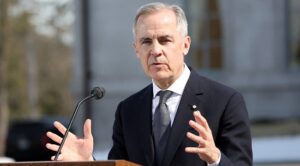
Canada is on track to accept more immigrants this year than at any time in the country’s history, despite a pandemic that has largely closed borders to outsiders
The Liberal government expects to achieve this goal largely by converting eligible foreign students, temporary foreign workers and asylum seekers who were already in Canada into permanent residents.
In June, the Department of Immigration, Refugees and Citizenship processed 45,100 applications for permanent residence, the largest number ever in one month, according to the office of Immigration Minister Marco Mendicino. In that same month, Canada welcomed 35,600 new permanent residents.
Such levels have Mr. Mendicino confident that his department will meet its goal of bringing in 401,000 new permanent residents this year, which would be the largest annual intake ever recorded.
“Against all odds, Canada continues to lead the world in immigration,” Mr. Mendicino said Friday in an interview. “We are going to make good on our commitment to land 401,000 new permanent residents.”
In 1913, the year that previously held the record, 400,810 immigrants came to Canada, as part of the federal government’s aggressive program to increase the country’s population, especially in the Prairies. However, Canada’s population that year was 7.6 million, one fifth of today’s population of over 38 million, so proportionately that record is unlikely ever to be broken.
Former Canadian embassy employee says he fled Afghanistan after Taliban attack, urges Ottawa to extricate his family
Special immigration measures will help Canada resettle thousands of Afghans who worked with military, embassy
Nonetheless, this year’s target is remarkable, given that Canada largely closed its borders in March of last year in an effort to limit the impact of the COVID-19 pandemic.
The country took in only 184,000 permanent residents in 2020, far below its target of 341,000. To make up the shortfall, Ottawa set targets of 401,000 new permanent residents this year, 411,000 in 2022 and 421,000 in 2023.
To overcome the obstacle of closed borders, the government announced In April plans to grant permanent resident status to more than 90,000 graduated students and temporary foreign workers who are employed in health care and other occupations deemed essential, such as agriculture, construction and delivery services. Some asylum seekers working in health care are also being admitted.
Most of those who were granted permanent resident status in June were already living here on temporary visas. But in June the Immigration Department also began welcoming qualified permanent residents from outside Canada, provided they were fully vaccinated or able to comply with quarantine restrictions. The numbers of admissions from this group could increase as Canada gradually reopens its borders to vaccinated travellers from overseas.
While most new permanent residents were admitted this year as economic-class immigrants, meaning they had to meet baseline requirements for education and employability, in September some 30,000 Canadian citizens and eligible permanent residents will be able to bring parents and grandparents to Canada, with applicants chosen by lottery.
“Things are very much trending in the right direction,” said Mr. Mendicino.
Unlike the United States, where immigration is a hotly contested issue, all major national political parties in Canada support high levels of immigration. Conservative Leader Erin O’Toole supports a robust immigration policy, and many of the Liberal government’s policies build on programs that were put in place under former Conservative prime minister Stephen Harper.
Canada’s approach differs markedly from that of other countries that accepted large numbers of immigrants prior to the pandemic. Australia took in 244,000 immigrants in 2019, but only 3,300 last year, after that country closed its borders to prevent the spread of the novel coronavirus. Observers say it could take a decade for immigration levels to return to their prepandemic levels.
In the same period, Immigration to New Zealand fell from 92,000 to 6,600 for the year ending March, 2021. And the government of Prime Minister Jacinda Ardern has announced it plans to impose a much stricter immigration policy when borders reopen.





